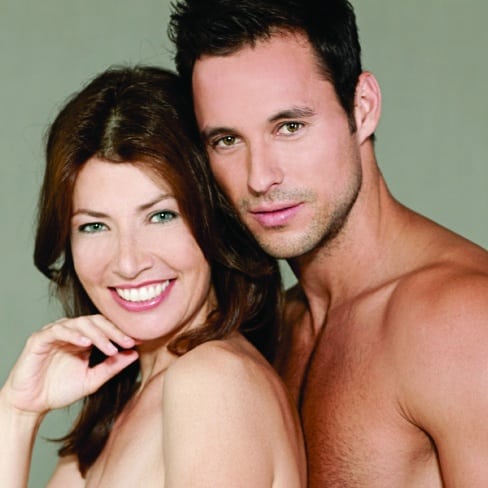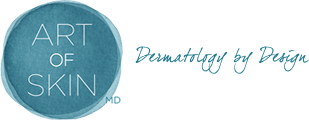Acne Scarring
Dr. Melanie Palm is a nationally recognized dermatologist and cosmetic surgeon specializing in the treatment of acne scarring using peels, lasers, fillers, microneedling, and radiofrequency. Her offices are located in Solana Beach, CA just north of San Diego. Dr. Palm lectures nationally on an innovative acne scarring treatment using microneedling radiofrequency. She offers many effective injectable treatment options for acne scars.
Types of Acne Scarring
Acne vulgaris (common acne) affects over 80% of Americans at some point during their lifetime. More severe types of acne including inflammatory and cystic acne can lead to scarring. Pigmentation, redness, textural changes, and scars may result from acne. Below are the typical categories of acne scarring:
- Post-inflammatory hyperpigmentation (PIH): Brown patches are often left on the skin after inflammatory acne resolves, especially in darker Fitzpatrick skin types (Hispanic, Mediterranean, African-American, Asian, Middle-Eastern ethnicities). These are like ashes after the proverbial acne fire has been extinguished. These old acne blemishes or stains can be treated in several ways with little to no downtime including peels, lasers, and topical skin care regimens.
- Post-inflammatory redness (erythema): In lighter skin types, inflammatory acne and cysts resolve with red to pink patches that may take months to resolve. If these spots were biopsied, they actually appear like mild scars. It is important to treat these with a combination of topical treatments and occasionally laser or light-based devices.
- Mild atrophic scars: Fine textural changes and flat, thin acne scarring may result from acne and is referred to as atrophic acne scarring or anetoderma. They usually respond well to lighter laser treatment such as Fraxel or ResurFX or a light CO2 laser resurfacing.
- Boxcar and rolling scars: Both of these scars are broad depressions but rolling scars have a sloping edge and boxcar scars have a sharply defined border. They best respond to a combination of treatments including subcision, microneedling radiofrequency, laser resurfacing, and filler placement.
- Icepick scars: These are narrow but deep pitted scars and are best addressed by punch removal or destructive modalities followed by some form of skin resurfacing such as lasers or peels.
- Hypertrophic and keloid scars: Both are raised, lumpy, firm pink, red, brown or purple bumps and plaques. Hypertrophic scars stay within the area of the acne scarring whereas keloids spread beyond the border of the acne scar itself. Keloids and hypertrophic scars typically require injection treatment with steroids or 5-fluorouracil and occasionally lasers.
Treatment Options for Acne Scarring
The correct choice or combination of treatment options for acne scarring depends on the type of acne scarring that is being treated. Scars are permanent changes in the skin – acne scars can be greatly improved but cannot be completed eliminated.
The following treatments are commonly used alone or in combination to treat acne scars:
- Topical skin care: retinoids, brightening agents (hydroquinone, azelaic acid, kojic acid) may be used to help treat redness and brown discoloration related to acne scarring as well as to minimize the severity of acne scarring.
- Peels: Salicylic acid peels are beta-hydroxy acid agents that are extremely helpful in post-inflammatory hyperpigmentation. Sal acid peels are superficial peels that are attracted to the hair follicle and oil gland where inflammatory acne develops. They treat active acne in addition to fading brown to pink stains left behind by old acne lesions.
- Subcision: Subcision is the use of a sharp needle (often a Nokor needle) after regional numbing to release a bound down acne scar. It is most commonly used in rolling and boxcar scars and is often combined with other treatments like microneedling radiofrequency or injectable fillers.
- Injectable fillers: very small amounts are used precisely to raise a depressed acne scar.
- Hyaluronic acid fillers: Restylane, Juvederm, Restylane Silk, Vollure, Volbella, Belotero, and others may be used to fill depressed acne scars. The effect should last approximately 6-12 months, sometimes longer. Oftentimes, the acne scar has some degree of improvement long term despite these being temporary fillers.
- Poly-L-lactic acid: Sculptra Aesthetic is a longer-lasting biodegradable product that stimulates collagen growth. Published medical studies have demonstrated improvement in acne scarring following treatment.
- Silicone: microdroplet injectable silicone is FDA-approved for ophthalmologic purposes but may be used off-label for select patients desiring a more permanent improvement of acne scarring.
- Lasers & Lights:
- Intense Pulsed Light (IPL or photofacial): IPL photofacials can target both red and brown in the skin. It is extremely effective as a no-downtime, minimal discomfort series of treatments to greatly improve post-inflammatory redness and pigmentation (PIH) following acne. It may be combined with lasers such as ResurFX or CO2 laser resurfacing if atrophic scarring or textural changes are desired. IPL also stimulates a small amount of collagen growth.
- Spectra laser: Spectra is a Q-switched laser that effectively pigments brown spots left behind by acne scarring. It can also be used with a gold hand piece to treat redness. Due to its longer wavelength (1064 nm), it is safer on darker skin types.
- ResurFX: ResurFX is an infrared laser very similar to Fraxel Re:Store. It offers a comfortable, minimal downtime procedure for mild to moderate atrophic acne scarring. It is best done as a series of treatments.
- CO2 laser resurfacing: CO2 laser treatment is an ablative treatment meaning it selectively removes and resurfaces a portion of the skin. It requires typically a week of downtime and is an effective treatment for moderate to severe acne scarring, typically in lighter skin types.
- Photodynamic Therapy: PDT is used off-label to treat active acne but is not covered by insurance. Because IPL treatment is often combined during this procedure, pigmentation, redness, and mild acne scarring due to collagen production may be improved with photodynamic therapy.
- Microneedling and Radiofrequency microneedling:
- SkinPen: Microneedling can provide a limited amount of improvement for very mild acne scarring. SkinPen is performed after topical numbing for increased patient comfort and has very little to no downtime.
- Infini (microneedling + radiofrequency): Infini can be an extremely effective treatment for moderate to severe acne scarring. It is safe on ALL skin types and this innovative treatment is quickly becoming a treatment of choice by experienced dermatologists. It is completed as a series of treatments and has some downtime associated with the procedure.
- Injection therapy: Thickened scars such as keloids or hypertrophic scars respond well to a series of injection treatments consisting of intralesional Kenalog (triamcinolone) and/or 5-fluorouracil. Injection therapy decreases the thickness of the scar and softens the hard scar.
- Punch excision: Punch excision is typically reserved for ice pick scars – tiny but deep scars that do not respond well to other forms of acne scarring treatment. After local numbing, a stitch is placed in the area of acne scarring removal. Laser resurfacing may be performed at the time of suture removal to improve the appearance of the acne scar.
A combination approach is sometimes ideal to improve scarring related to inflammatory and cystic acne. Non-invasive and minimally invasive techniques are often combined with topical skin care regimens at Art of Skin MD to achieve the aesthetic goals of our patients in regards to acne scar treatment.
If you are interested in learning more about acne scarring, or would like to set up a consultation, call Dr. Melanie Palm at 858.792.SKIN (7546) to schedule your appointment.




